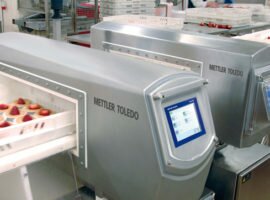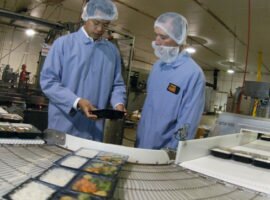-
17 JUL 18
How to Beat Meat, Poultry and Seafood Metal Detection Challenges
Meat, poultry and seafood manufacturers face many pressures on their production lines. Maintaining a hygienic production area, adhering to stringent regulations and standards and maximizing uptime are just some of the key challenges in the industry.
In this post, we explore five key inspection pressures that meat, poultry and seafood manufacturers face, and how by using the latest metal detection technology, you can overcome these challenges and provide additional benefits to enhance your production lines.
Reducing Waste
As with most food production companies, meat, poultry and seafood manufacturers are under constant pressure to reduce waste. Traditionally metal detectors struggle to maintain high sensitivity levels without suffering some level of false triggering. This is where the metal detector rejects perfectly good product due to a false metal signal when it is being inspected. This is particularly common when inspecting chilled, wet or frozen food as the varying moisture and salt content can create a signal similar to metal – something known as ‘product effect.’
Fortunately, metal detection technology has advanced in the last few years. For example, our uses multi-simultaneous frequency and product signal suppression technology to cancel out ‘false’ signals to virtually eliminate the rejection of ‘good’ product.
Maximizing Process Efficiency
Uptime and productivity are some of the biggest drivers in food manufacturing. Manufacturers are looking to equipment suppliers to develop innovative solutions that address both issues. With this in mind, product inspection equipment needs to be operating as effectively as possible, in terms of detection capability, whilst minimizing the occurrence of downtime.
Innovative metal detection technology such as intuitive clustering reduces set-up time during product changeovers and condition monitoring provides early warning of potential faults so issues can be addressed during planned downtime, before potential downtime is incurred. On-board OEE reporting documents the metal detector’s availability, reliability and quality as part of the overall production line performance.
Complying with Standards
In a competitive industry governed by strict standards, regulations and legislation, the stakes for manufacturers are high. Inspection devices sit at the heart of any well-designed production process, meeting due diligence specifications to give you peace of mind that you are meeting all compliance requirements.
It is important that appropriate product inspection equipment is installed across all critical control points. Not only to ensure that all standards are met, but to further reduce product waste.
A robust product inspection program could include equipment at each of these production stages:
- Front-end inspection enables early detection of contaminants before value is added, whilst also protecting equipment further down the production line – ideal for detecting needles in meat products or fish hooks in seafood for example.
- In-process inspection minimizes product waste and enables potential product re-work before further value is added, reducing production costs and product waste.
- End of line inspection delivers peace of mind that there is no further risk of foreign body contamination, ensuring only perfect product leaves the production facility.
Whilst ensuring that all products comply with food safety standards, operator safety is equally important. To protect operators during production and support safe maintenance practices, attention must be paid to every detail of the design of the metal detection system. This includes shatterproof round-edge guards, safety valves and guarded in-feed and out-feed rollers that remove the risk of finger traps.
Maintaining a Hygienic Production Line
Meat, poultry and seafood manufacturers have to meet stringent hygiene standards to ensure both food safety and food quality. The risk of biological contamination in facilities that process animal proteins can be reduced by using equipment designed to support demanding hygiene procedures.
Having a metal detector designed and constructed for operation in harsh environments and sealed to IP69K is a positive first step to ensure you are meeting hygiene standards. However, the metal detector is only part of the story. The product handling system is also extremely important. Conveyorized systems can include open angle-iron frame construction, specialist hygienic feet, ultra-hygienic transport belts supplied with sealed edges and welded joints, and belt lifters to allow cleaning to be carried out quickly and effectively.

The new ultra hygienic-designed Profile Advantage conveyorized system from METTLER TOLEDO is in line with EHEDG requirements.
Protecting your Brand
Food contamination can have disastrous consequences for manufacturers; by putting consumers in danger, and the impact to your brand and reputation.
Manufacturers rely on high performing product inspection equipment to ensure products are free from contamination and remain consistently safe and of a high quality for consumers. The most advanced metal detector such as the can detect up to 50% smaller irregular-shaped metal contaminants than other similar metal detectors on the market, ensuring the products that it inspects are safe and of a high quality.
metal detector is designed with meat, poultry and seafood manufacturers in mind. To find out more, visit
For more blog posts like this click HERE.
To receive notifications when a new blog is posted, SUBSCRIBE TO OUR BLOG
Leave a reply →



